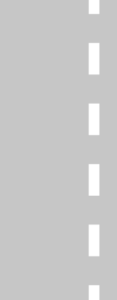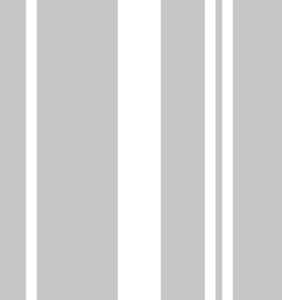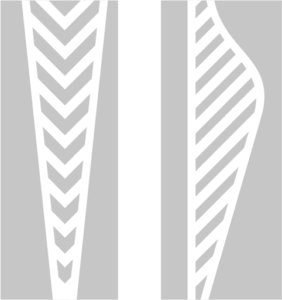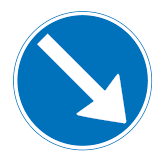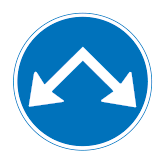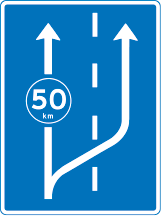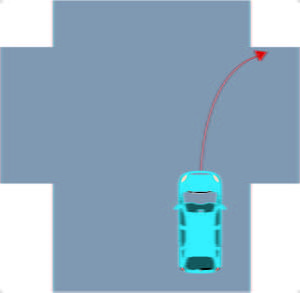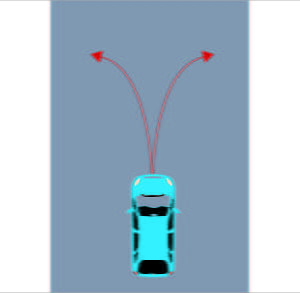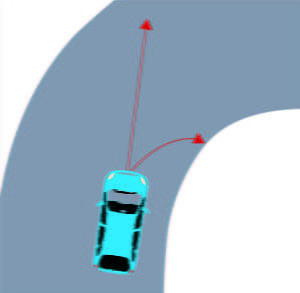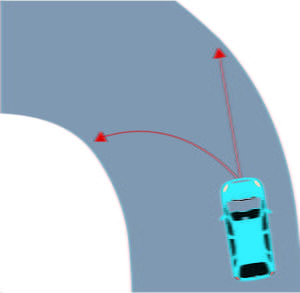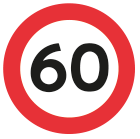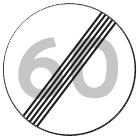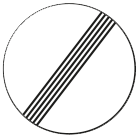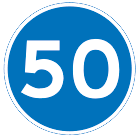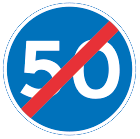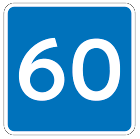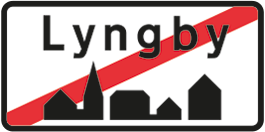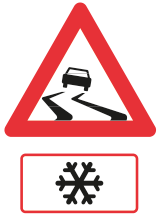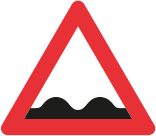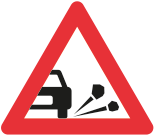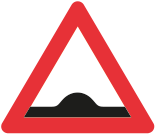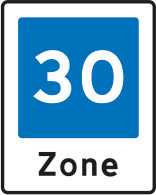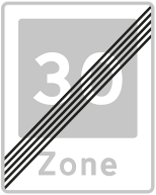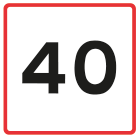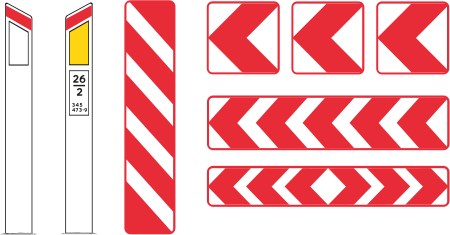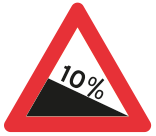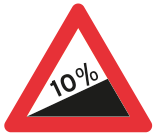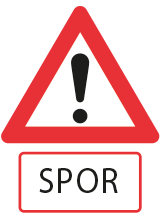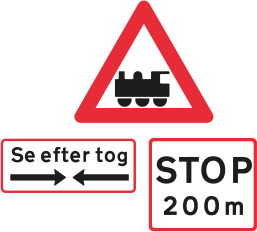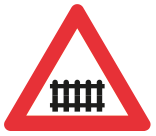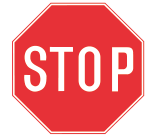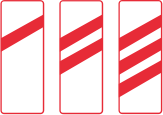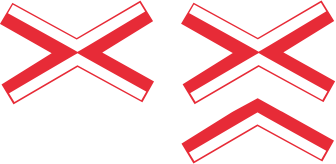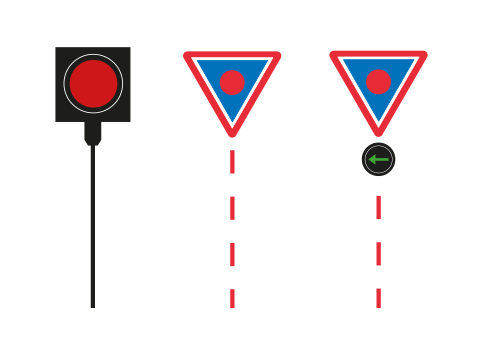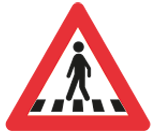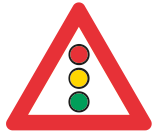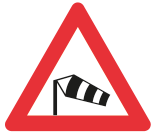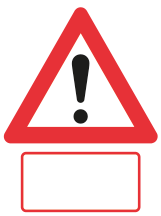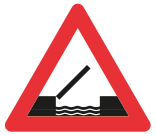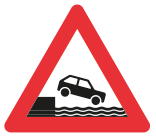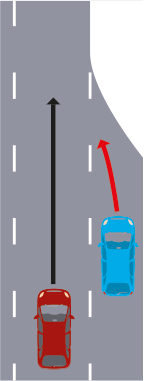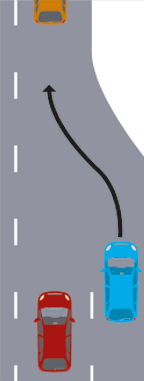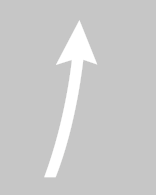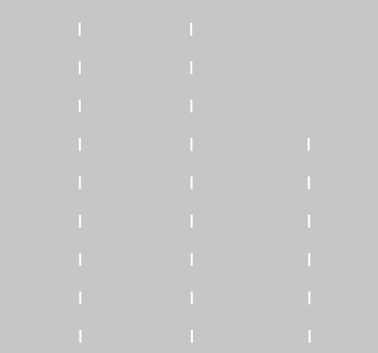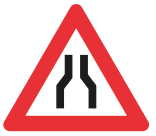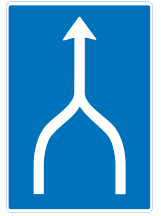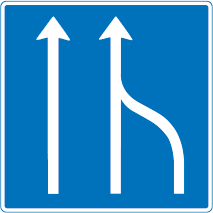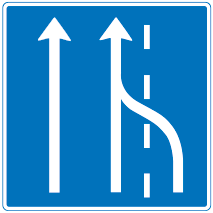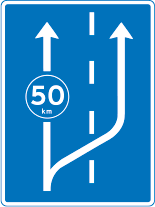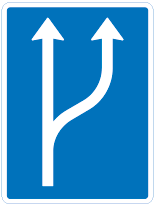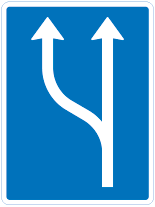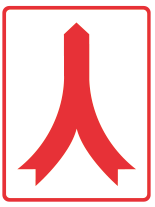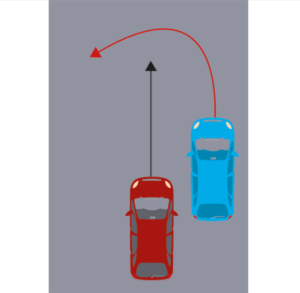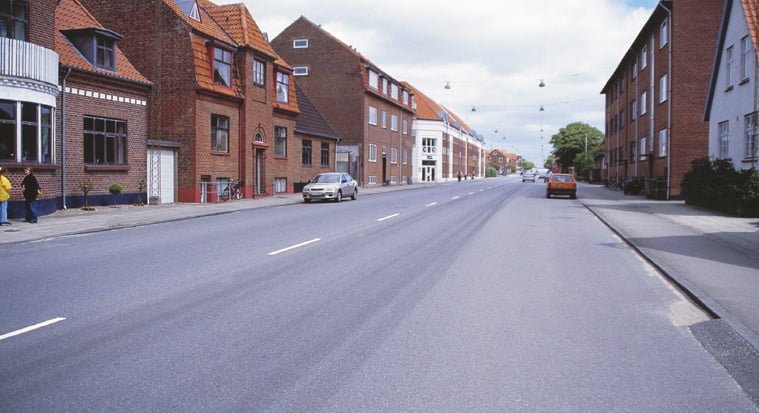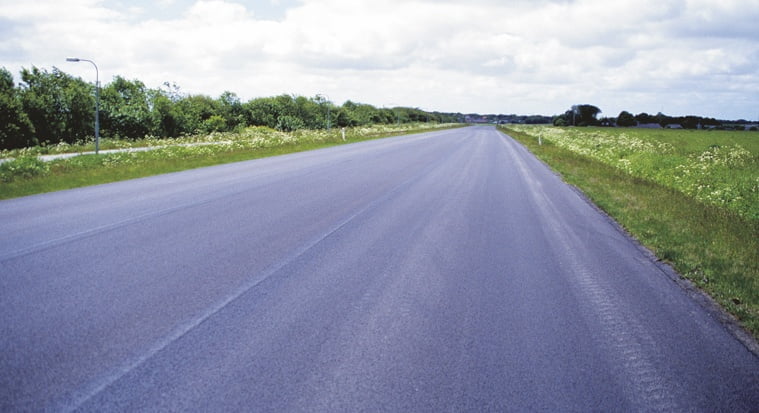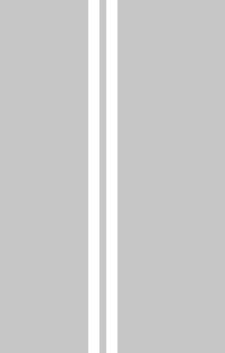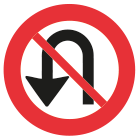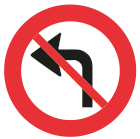Passenger car
Driving school
theory book
to category B
Sections 7.1 - 7.5: The first manoeuvres on the way
Theory and practice come together
In this section, you will use some of the knowledge you have already gathered in the previous sections, but also learn some new things. This section provides rules and guidance on how to orientate and otherwise manoeuvre the car in each situation. Many of the manoeuvres and situations are easier to understand if you go through them with your instructor, both before and during driving lessons.
Section seven is special because you'll use it to prepare for both the theory test and the driving test. For each of the 20 situations you're about to read about, there are several points to pay special attention to.
Firstly, for each situation, there is a point that says you "must learn to recognise and cope with the following hazardous situations". This means that you must learn to perceive certain conditions in traffic situations or in pictures (i.e. both while driving and in theory), understand what the conditions mean and react correctly to them - or find the right answers among several questions about these conditions. In other words, you need to learn to "notice and cope" with both general conditions and specific situations.
The second point you should pay special attention to is called "how to". For example, "How to make a right turn at an intersection". This gives you guidance on how to orientate yourself and manoeuvre correctly in each situation. In other words, it's a kind of recipe for what to do.
Finally, for each of the 20 situations, there are a number of lane markings and traffic signs that you must be able to recognise and indicate the meaning of and react correctly to, both in the theory test and the driving test. You will find all lane markings and traffic signs on the back pages of the book.
It's during this section that you need to bring things together, so let's get serious.
1. starting and stopping at the edge of the carriageway
When starting and stopping at the edge of the carriageway, the manoeuvre must be carried out without danger or unnecessary inconvenience.
The turn signal must be signalled when starting off, just as the stop lights and turn signals must be signalled when stopping.
Risks and accidents
Starting hazards occur when the starter misjudges the speed and distance to those approaching from behind. Starting accident risks can also be caused by a driver becoming impatient from waiting - and driving forwards. Finally, the car may stall if it has just been started on a cold engine.
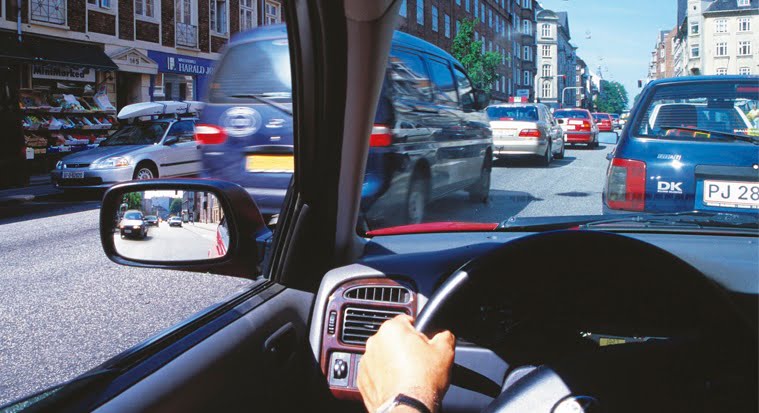
In fact, most starting accidents are caused by the starter being hit from behind. Usually the other party is a car, but it can also be a two-wheeled road user.
Orientation and manoeuvring
You need to learn to recognise and manage the following hazards when starting from the roadside:
- Road users approaching from behind can be hidden in blind spots.
- Situations where there is not much room to manoeuvre and therefore many things to keep an eye on.
- Reduced traction.
Commissioning - here's how
- Fasten your seatbelt and switch on the light.
- Assess the speed, density and location of other traffic.
- Give signs well in advance before you start.
- Only pull out when there is time and space to do so without causing danger or undue inconvenience, and start off smoothly as taught on the manoeuvring course.
- Accelerates so fast that drivers behind you don't need to slow down.
- During a quick acceleration, you may want to skip one or more gears.
- Switch off the turn signal.
Stopping - how to do it
- Signal to stop with a stop light and, if necessary, a turn signal.
- Brake softly to a stop at the edge of the carriageway.
- Switch off the lights.
2. positioning under the straight-ahead carriageway
Orientation and manoeuvring
Placement under the straight-ahead carriageway - how to do it:
- Always stay in the right lane and only use the left lane for overtaking or overtaking.
- Move as far to the right as possible in consideration of cyclists, moped riders, parked vehicles, pedestrians and other conditions, and otherwise position yourself in the centre of the marked lanes.
- Pull slightly to the right before hilltops and blind bends on narrow roads.
- Don't keep your eyes on the road immediately in front of the car, but look far ahead at short intervals and try to pay attention to the road conditions 8-12 seconds ahead (at 80 km/h, this is equivalent to looking 190-290 metres ahead).
- Keep your eyes moving and always be aware of the conditions ahead, to the sides and behind you via the mirrors.
- Anticipate traffic so that significant and unnecessary speed reductions are avoided, thereby saving fuel.
- Look as far ahead as possible on stretches of road where hills and bends limit visibility.
- Take advantage of the road's visual cues when cornering to stabilise steering.
- Steering corrections should be gradual; avoid jerky steering wheel movements.
The faster you drive, the fewer steering corrections you need to make.
Carriageway stripes
An unbroken kerb line marks the part of the carriageway used by cars, motorcycles and large mopeds that you may only cross when stopping, parking or entering or exiting the road. However, an unbroken kerb line can also be crossed if you pass to the right of a road user turning left in a place where the lane to the right of the kerb line is not a dedicated lane, such as a cycle lane or bus lane.
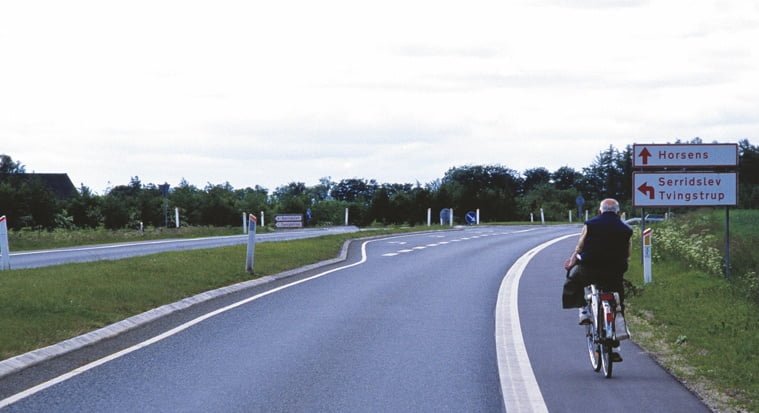
A wide kerb line shows that there is space outside the line for cyclists and pedestrians. A narrow kerb line shows that there is usually no room for them and that they
therefore using the same part of the carriageway as the cars.
Traffic signs
Slipways, etc.
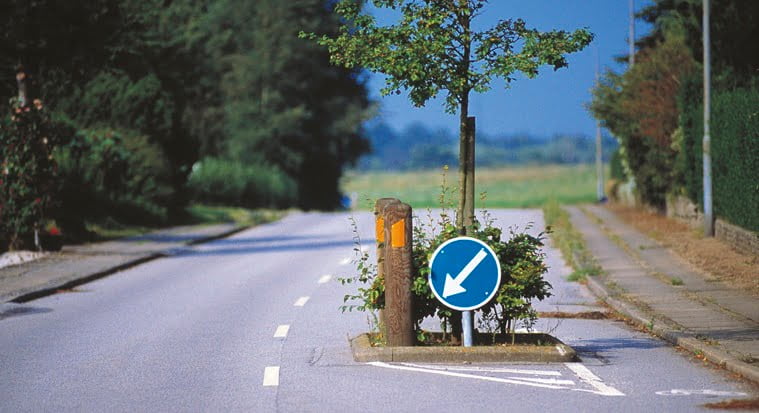
You must drive on the right around traffic lights, traffic beacons and the like, unless otherwise indicated by signs or the road is one-way.
3. Speed when travelling straight ahead
Outside densely populated areas (excluding motorways), the maximum speed limit is 80 km/h, unless otherwise indicated by traffic signs. If you are driving with a trailer, the speed is also 80 km/h on motorways. If the trailer is tempo 100 approved, you can drive 100 km/h on motorways.
Risks and accidents
Speeding is the most common cause of serious road accidents. Many single-vehicle accidents are caused by the road user. Most often, they are due to a misjudgement of their own speed, the sharpness of the bend or the road grip, especially on bends and in slippery or oily conditions. However, single-vehicle accidents are also often caused by fatigue or intoxication.
Finally, single-vehicle accidents can be caused by the car not being in a safe enough condition, incorrect tyre pressure, worn tyre tread or incorrect loading.
Young drivers are particularly prone to single-car accidents. They suddenly lose control of the car - usually due to excessive speed. Unfortunately, this often happens in conjunction with drunk driving, drug use or inattention.
Solo accidents are just as likely to happen on straight stretches of road as on bends. In road bends, single-car accidents occur when the driver drives off the edge of the carriageway on the outside of the bend.
Narrow roads have more single accidents than wide roads.
There are a number of solo accidents, especially at higher speeds, where the driver moves too far to the right or left on the carriageway (possibly into the verge) and tries to turn back too abruptly, losing control.
Orientation and manoeuvring
You need to learn to recognise and manage the following speed-related hazards:
- Sharp bends in the road that require particularly good traction.
- Railway crossing with poor visibility.
- Road surfaces with poor friction and thus reduced traction, such as gravel roads or cobblestones.
- Road bumps that reduce speed.
- Obstacles ahead in your lane, such as parked vehicles, vehicles in front of you or pedestrians.
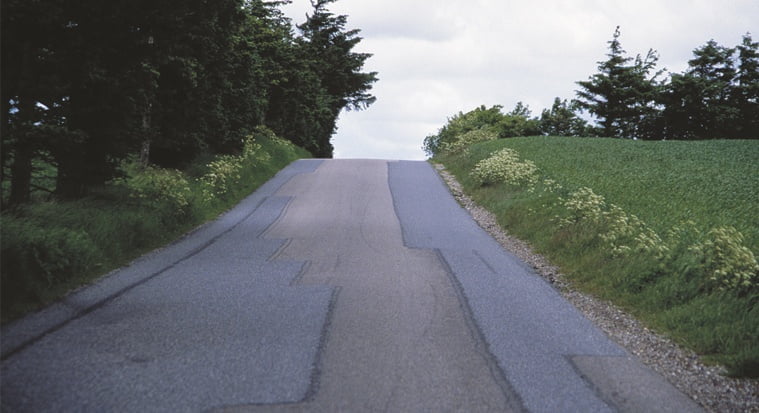
Road curves or hills that reduce visibility and hide possible obstacles, such as slow-moving vehicles or pedestrians.
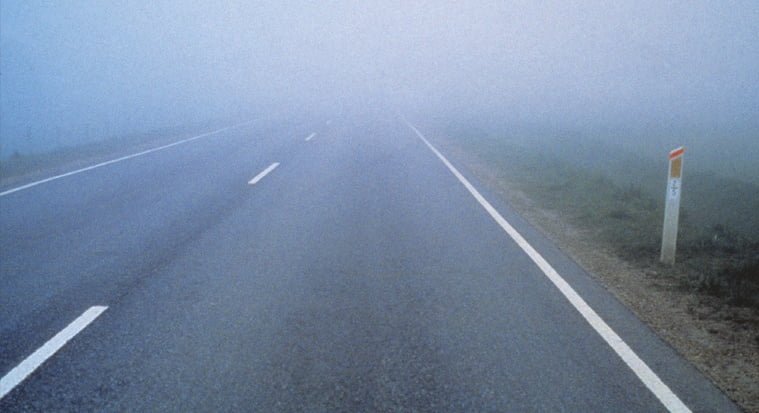
Weather conditions, such as blinding sun, rain or fog, that reduce visibility.
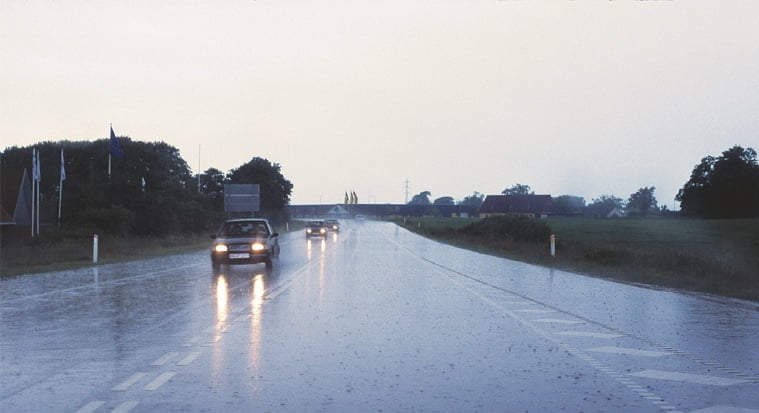
Weather conditions that reduce traction, for example slippery or oily conditions.
Choosing your speed - here's how
- Judge your speed by visual impressions from the road, feeling the vibrations from the car and sounds from the engine, wind noise, tyre noise, etc. Check the impression by a quick glance at the speedometer.
- Look for lane stripes and traffic signs that warn of road turns, speed limits, railway crossings or other conditions that affect speed.
- Look out for road users approaching from behind, especially heavy vehicles that need to accelerate just before going uphill.
- Look out for road users coming from behind and possibly accelerating downhill.
- Look to both sides for trains that may be approaching a railway crossing.
- Even if no warnings are given.
- Adjust your speed to the highest safe and legal speed on the route and keep it fairly steady.
- Choose a speed that keeps you in control of the car at all times and allows you to stop within a manageable distance.
- On long straight stretches of road, you may be able to use your car's cruise control.
- To save fuel, drive in as high a gear as possible without the engine revving.
Manoeuvring on hills
- If you're travelling uphill, shift to a lower gear in good time if there are slow-moving road users in front of you, or if you can hear the engine straining or any electronic indicator on the car showing this.
- Use the creep lane if you are unable to maintain the required minimum speed up the hill, for example because you are travelling with a trailer or caravan.
- If necessary, reduce your speed before an unmanageable hill.
- Choose an appropriately low gear for downhill driving in relation to the slope and length of the hill.
- Maintain a steady speed downhill by easing off the accelerator, possibly shifting to a lower gear or braking lightly at intervals. Avoid continuous braking over a long distance. This can make the brakes so hot that they fail.
Manoeuvring in turns
- Select an appropriate gear for the sharpness of the corner and drive through it at a constant speed, i.e. without accelerating or braking
- Accelerates smoothly as you exit the corner while keeping the car upright.
Manoeuvring at a railway crossing ahead
- Regardless of the nature of the instruction, you must reduce your speed before the railway crossing so that you have time to stop if a train is approaching.
- If a train is approaching, if turn signals are on, if barriers are lowered or if you are otherwise warned that a train is approaching, you must stop at the stop line or at a safe distance before the crossing sign, turn signal or barrier where there are stop signs, you must stop at the stop line.
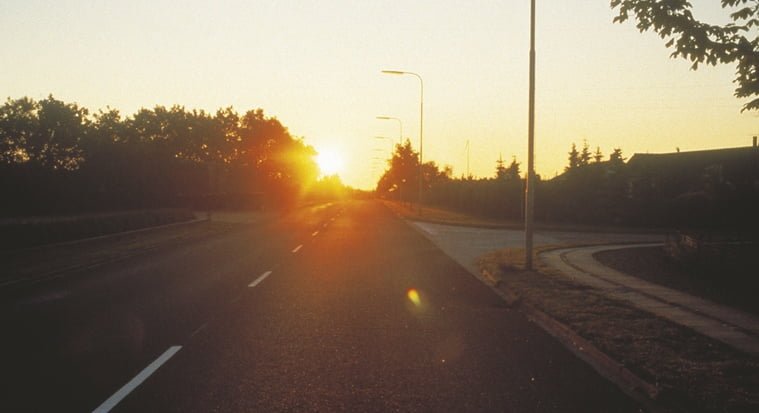
If you are driving towards a low sun, there is a risk of being blinded and not being able to see oncoming traffic and any road users on your side of the road. Therefore, drive carefully.
4. Lane changing and merging
Where two lanes merge, either the lane change rule or the merging rule applies. When changing lanes, you must ensure that you do not cause danger or unnecessary inconvenience to road users coming from behind. When merging, road users must show mutual consideration for each other.
Risk conditions
In both lane changes and merging, risky situations can arise if you misjudge the distance and speed of a road user approaching from behind. You can also orientate yourself backwards for too long at a time and fail to notice obstacles that may be ahead. Changing lanes can be risky because it can surprise other drivers who may expect you to stay in your lane.
When merging, dangerous situations can also arise if you get too close to other road users during the merge. Never blindly trust that the drivers you are merging with will fulfil their merging obligation.
Orientation and manoeuvring
You need to learn to recognise and manage the following hazardous situations when changing lanes or merging:
- Road users approaching from behind from both the right and left can be hidden in blind spots.
- Adjust your speed and distance to other road users during the manoeuvre.
- Other road users who are changing lanes.
- Signs that other road users are not honouring their merge obligation.
Vn lane changes and merging, you must not be a hazard or undue inconvenience and you can use the turn signal if it may be to help fellow road users.
Changing lanes - how to do it
- You should check your mirrors and turn your head well in advance to see if you can change lanes. Is there room? What speed should you choose?
- Signal with your turn signal if it can help, for example, rear-engaging road users who are close to you.
- As far as possible, adapt your speed to the traffic in the lane you want to change to.
- Avoid changing lanes if it forces other road users to slow down.
- Change lanes quickly enough to avoid driving on a lane line for a long time Position yourself in the centre of the new lane.
- Switch off the turn signal.
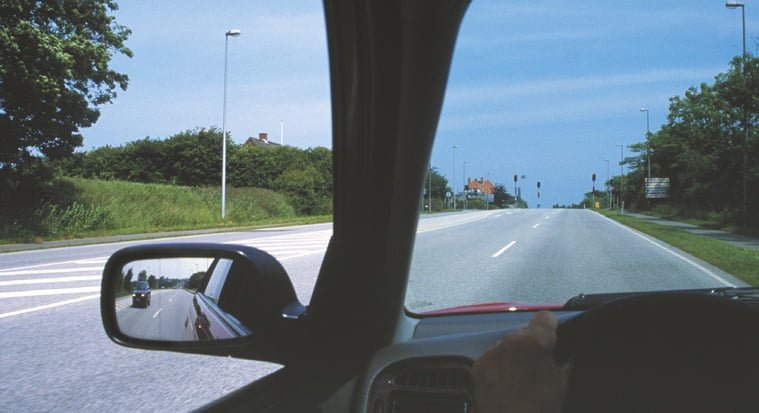
Here, you will turn left further ahead and have to move into the other lane. Since the lane lines are continuous, the lane change rule applies here.
How to merge - here's what to do
- Just as with lane changes, you inform yourself well in advance about the possibility of merging.
- You can give signs to alert other road users that you will merge.
- Assess whether there is space and adjust the distance to the road users you want to merge with, for example.
- If you have switched on the indicator light, switch it off.
Roadway striping, etc.
- Lane lines that are interrupted a short distance before the point where there are fewer lanes or where two lanes merge emphasise that the merging rule applies here. In other words, you need to adjust your speed to the speed of those travelling in the adjacent lane and take advantage of a large enough gap to merge. The drivers in the neighbouring lane must help you, for example by slowing down.
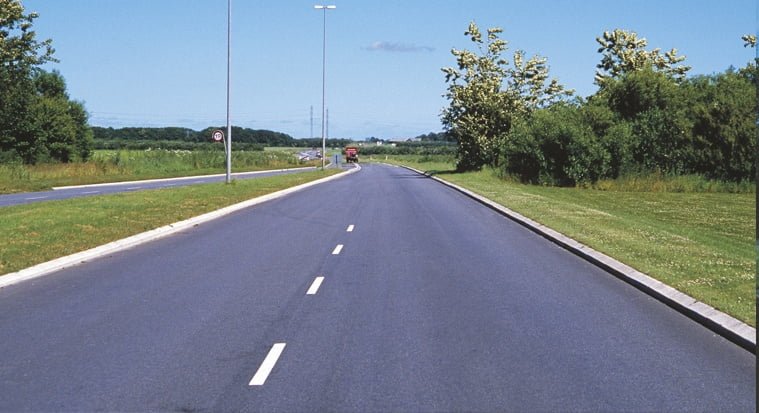
If the lane line ends some distance before the road narrowing, the merge rule applies. Note that there may not necessarily be signs to follow.
5. Turning and reversing
Risks and accidents
Risky situations for all types of turns and reversing occur if the speed and distance of oncoming and reversing drivers is misjudged.
When making a U-turn from the centre of the road, there is also a risk that you will focus all your attention on oncoming traffic and not notice other hazards. Finally, impatience can cause risky situations - some people are very impatient and take risks.
When turning at a signalised intersection, other risk factors are overlooked because attention is focused solely on the traffic light.
When reversing, accidents happen when you misjudge road users or objects behind you, as well as misjudging the dimensions of the vehicle. It is also a risk if you use too many resources on the manoeuvre and thus overlook other risk factors.
Orientation and manoeuvring
You need to learn to recognise and manage the following hazards associated with all types of reversing:
- A narrow manoeuvring space due to the width of the road being small in relation to the car's steering ability. That is, the turning diameter of the car.
- An uncritical choice of manoeuvre point for turning from the side of the road, for example with poor visibility.
Before turning or reversing, ensure that the manoeuvre can be performed without danger or inconvenience.
When turning, you must signal with the flashing light. Turns must be made forwards to the left, unless conditions do not allow this.
U-turn from the centre of the road - how to do it
- Orient yourself as you do when changing lanes and merging. Keep an eye out for traffic behind you and any parked cars.
- Indicate left, slow down and move to the centre of the road or the lane closest to the central reservation.
- Judge whether a gap in oncoming traffic is large enough to make the U-turn safely without endangering or inconveniencing other traffic.
- If the road is clear, make a sharp turn.
- In the middle of the turn, accelerate slightly to make it easier to straighten up.
- Continue driving in relation to the speed of other traffic.
- Switch off the turn signal.
Turning at intersections with signalling control
Here you make a U-turn from the centre of the road.
In addition, you must judge oncoming traffic, stay aware of the traffic light regulation and be aware of other traffic, especially those coming from the left and turning right at the green arrow signal.
Turning from the right edge - how to
- Look for a suitable place to legally stop on the right-hand side.
- Signal with your turn signal well in advance.
- Reduce speed and apply soft braking.
- Put the car in neutral, release the clutch, apply the parking brake and switch off the indicator lights if you need to stop for more than a few moments.
- Be aware of other traffic - especially traffic from behind and any other vehicles stopped on the side of the road, as well as when starting from the side of the road.
- Assess whether you can turn around without causing danger or inconvenience to others.
- Signal with the turn signal and turn as you learnt in the closed practice area (exercise 9).
- Straighten up and continue driving in relation to the speed of other traffic.
- Switch off the turn signal.
Backwards driving
- Start as if turning from the right edge.
- You must perform reverse driving as learnt in a closed practice area.
When travelling in a straight line in reverse.
- Remain in the correct lane throughout the manoeuvre.
Reverse with cornering.
- Give signals well in advance of the turn.
- Turn backwards to the right onto a side road.
- Adapt the steering to the sharpness of the turn.
- Remain in the correct lane throughout the manoeuvre.
- Straighten up quickly enough after the swing so that the course is straightened again.
- Stop signposting.
- Stop and shift into neutral.
Test your knowledge
Cat. B - Sections 7.1 - 7.5
Select the questions you think are the right ones.


